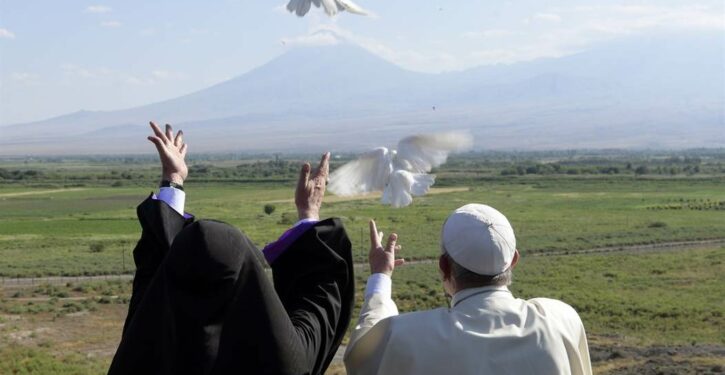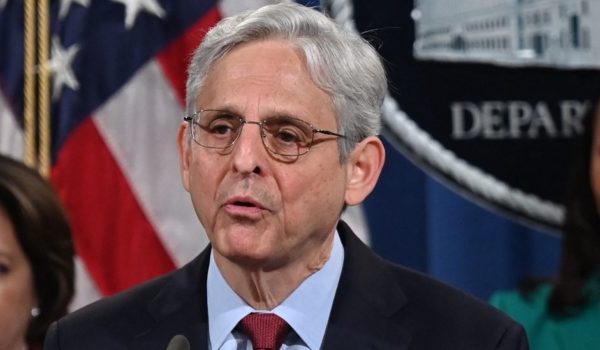
Thanks for joining our Bible study. Here is how “birds” became this week’s topic. While I was at church, the video screen showed a dove representing the Holy Spirit. Then immediately received a “ding ding” — a clear message to write “What the Bible Says About Birds.” (Loyal readers know that whenever I receive a “ding ding,” I feel blessed and humbled.)
However, upon starting to write, I quickly realized that there were too many “bird” verses to stuff into one study — nearly 300. Thus, today’s title reads “Hebrew Bible,” and next week will be “What the New Testament Says About Birds.”
That concludes today’s announcements. Now, let’s spread our wings and learn what God has to say, beginning with the first biblical reference:
“And God said, ‘Let the water teem with living creatures, and let birds fly above the earth across the vault of the sky’ ” (Genesis 1:20).
After God created “man and a woman” to “rule over” His other creations, God had to sustain all of them (read Genesis 1:27-29). Then, about non-humans, He said:
“ ‘ And to all the beasts of the earth and all the birds in the sky and all the creatures that move along the ground—everything that has the breath of life in it—I give every green plant for food.’ And it was so” (Genesis 1:30).
While researching about birds in the Bible, I found a commentary with the following paragraph that sets the stage and provides context for all the verses we review today:
“Throughout Scripture, birds are used to teach us about the nature of God and his relationship with humanity. As we learn about the different meanings of these bird symbols, we can deepen our understanding of the Bible and find new ways to apply its teachings to our lives.”
The next Genesis reading involving birds was Noah’s story (see Vol. 163 and Vol. 164). After the rain subsided, Noah used two species. First, a raven flew back and forth from the ark until “water had dried from the earth.” Second, Noah sent a dove who also made a few trips until:
“..there in its beak was a freshly plucked olive leaf! Then Noah knew that the water had receded from the earth” (Genesis: 8:11).
Since Noah was a farmer, he knew olives did not grow at high elevations. Moreover, did you know that a dove with an olive branch — the modern symbol for peace — originated from Genesis: 8:11? I didn’t! Furthermore, the dove symbolizes the Holy Spirit and hope in the secular world. In Noah’s case, the dove represents his family’s future and how God fulfilled the Covenant He made with Noah.
Speaking of God’s Covenants, in Genesis 15, after God told Abram (later Abraham) that He would give him “this land to take possession of it,” Abram asked God, “How can I know that I will gain possession of it?” God answered:
“So the Lord said to him, “Bring me a heifer, a goat, and a ram, each three years old, along with a dove and a young pigeon.” (Read here how God showed Abram what God said was true and then told Abram about his future generations. Also see Vol.168.)
Speaking of doves, they are the number one “Most Often Mentioned Bird in the Bible” – (47 times.) And for those keeping score, eagles and owls are tied (27), ravens (11), sparrows (7), and quail (4). Those numbers include both the Old and New Testaments.
In Leviticus (Hebrew Bible’s third book), God instructed Moses precisely how to prepare sacrificial burnt offerings in gory detail. (See Vol. 126 for evidence of burnt offerings.)
“ ‘If the offering to the Lord is a burnt offering of birds, you are to offer a dove or a young pigeon. The priest shall bring it to the altar, wring off the head and burn it on the altar; its blood shall be drained out on the side of the altar ’ ” (Leviticus 1:14-17).
Bird sacrifice also appears in the New Testament. (More on New T next week.) Briefly, when Mary and Joseph presented Jesus in the temple, they brought with them, keeping with “the Law of the Lord,” ‘ a pair of doves or two young pigeons ’ ” (Luke 2: 21-24).
Back to birds in Leviticus, God proclaimed rules about species not to be consumed to “preserve the sanctity of Israel as God’s holy people” (according to my NIV Study Bible footnote). God provided Moses with the following list of non-consumables:
“ ‘These are the birds you are to regard as unclean and not eat because they are unclean: the eagle, the vulture, the black vulture, the red kite, any kind of black kite, any kind of raven, the horned owl, the screech owl, the gull, any kind of hawk, the little owl, the cormorant [pelican family], the great owl, the white owl, the desert owl, the osprey, the stork, any kind of heron, the hoopoe and the bat’ ” (Leviticus 11:13-19).
(So why did God create these “unclean” bird species? I will put that on my list of questions to ask God if or when I see Him.)
Here is a famous verse concerning the second most mentioned Bible bird that God, speaking through Isaiah, uses to teach us about hope and perseverance:
“ …but those who hope in the Lord will renew their strength. They will soar on wings like eagles; they will run and not grow weary, they will walk and not be faint” (Isaiah 40:31).
In the Book of Psalms, there are numerous references to birds. Here are a few examples reminding us about how Almighty is our God – in case you forget:
“I know every bird in the mountains, and the insects in the fields are mine” (Psalm 50:11). And this Psalm proclaims His great Kingdom:
“How lovely is your dwelling place, Lord Almighty! My soul yearns, even faints, for the courts of the Lord; my heart and my flesh cry out for the living God. Even the sparrow has found a home, and the swallow a nest for herself, where she may have her young— a place near your altar, Lord Almighty, my King and my God” (Psalms 84:1-3).
That Psalm is a good ending marker since Jesus continues this same “God will care for you since He cares for the birds”’ theme in the New Testament. See you next week!
Myra Kahn Adams is a conservative political and religious writer with numerous national credits. Her book, “Bible Study For Those Who Don’t Read The Bible,” reprints the first 56 volumes of this popular study. “Part 2,” with the same title, reprints Vols. 57-113. Order it here.
Cross-posted at Townhall and Substack.



